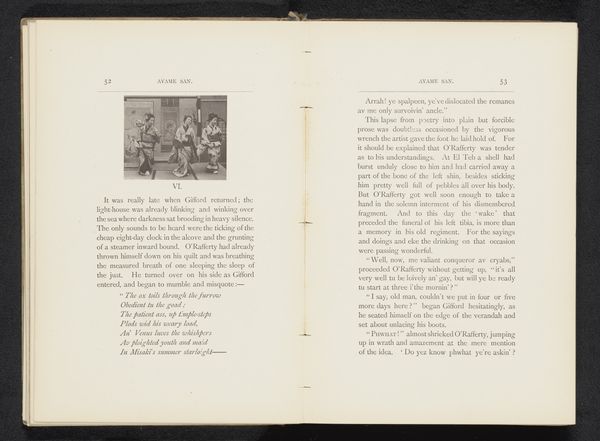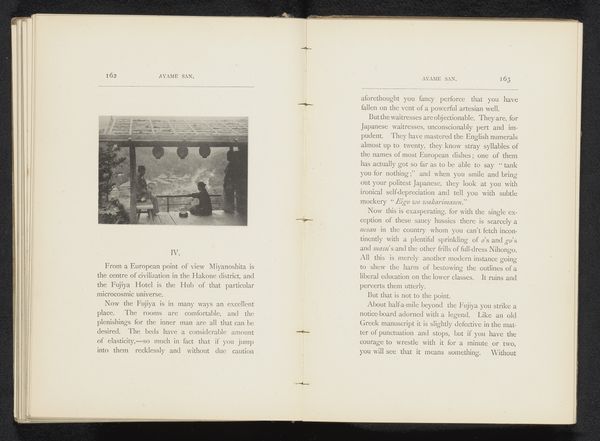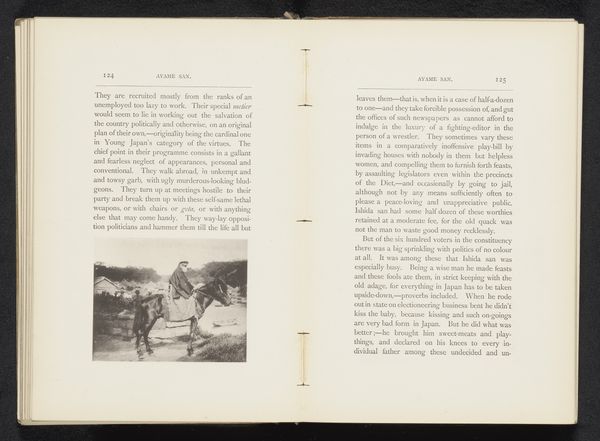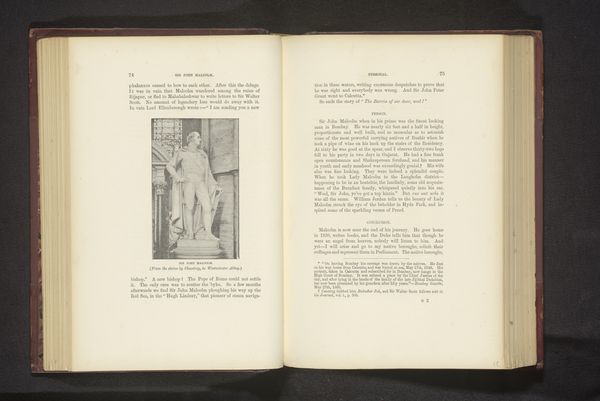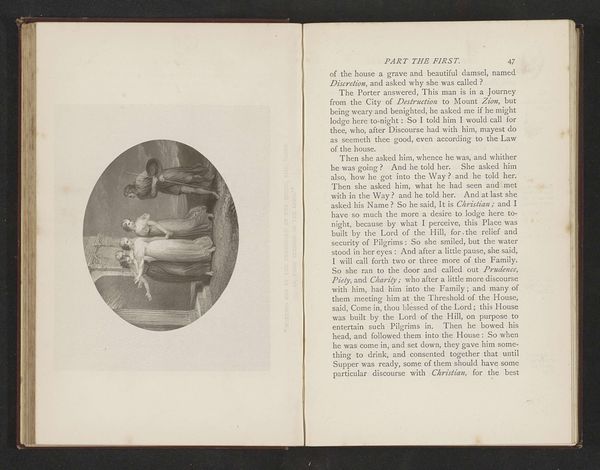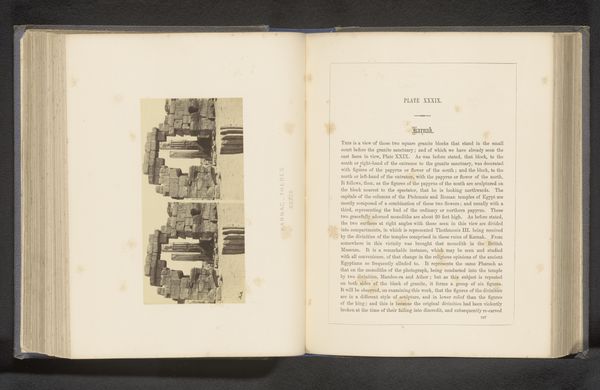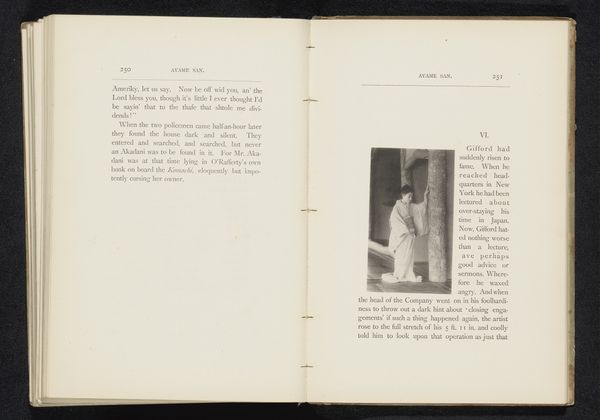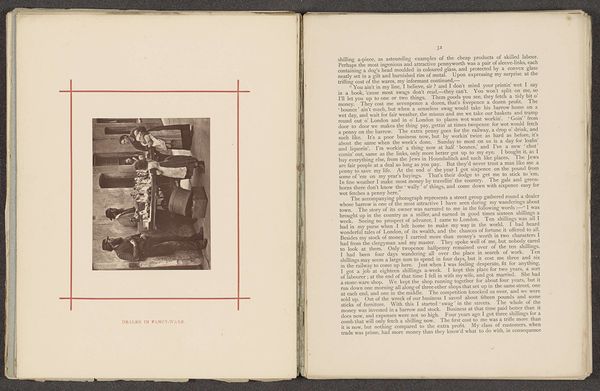
Dimensions: height 62 mm, width 66 mm
Copyright: Rijks Museum: Open Domain
Curator: Looking at "Drie dansende vrouwen in een interieur," a print made before 1892 and credited to Kazumasa Ogawa, it immediately strikes me as a blend of traditional Japanese aesthetics with early photographic techniques. The figures are carefully posed within an interior setting, a fusion of ukiyo-e and photography. Editor: My immediate reaction is one of quiet intrigue. It’s a small-scale work with figures that almost appear to be captured in a fleeting moment of everyday performance. The soft tonality and delicate rendering create a melancholic, dreamlike atmosphere. What processes were used to make the image? Curator: As a photographic print, the materiality is interesting because the surface, likely paper, bears a photographic emulsion layered with pigments or inks. The use of photography enabled the capturing and replication of images but printed reproductions suggest larger access. The print medium meant that many copies of these dancing women were made. Editor: Absolutely. This work's broader context, viewed through a feminist lens, also draws interest. Although appearing benign and traditional, what could these three dancers embody or subvert within their societal moment? Kazumasa Ogawa, was trying to introduce a modernizing Japan and did this form exoticize or elevate this image of women for a Western audience, and was this made in response to internal political changes? The caption near it on this page is describing new fashions and outfits for powerful members of Japanese society. Were these images for members of Japanese high society as well? Curator: That’s fascinating to consider. What labor was involved to make it accessible? I am keen to consider who worked with Kazumasa to craft this photographic print and also how the original photograph that the prints would have been derived from impacted his prints, especially how the contrast, saturation and tones could be modulated or reproduced at this time? Editor: Thinking about cultural diffusion through prints in Kazumasa Ogawa’s body of work broadens our understanding. I like the intersectional questions about technology, gender and culture in the print. Curator: Indeed. Studying prints, especially like this one in its material form, provides valuable entry points for discussions of modernity, cultural representation, and the evolution of artistic techniques in Meiji-era Japan and the networks required to produce art and fashion.
Comments
No comments
Be the first to comment and join the conversation on the ultimate creative platform.
